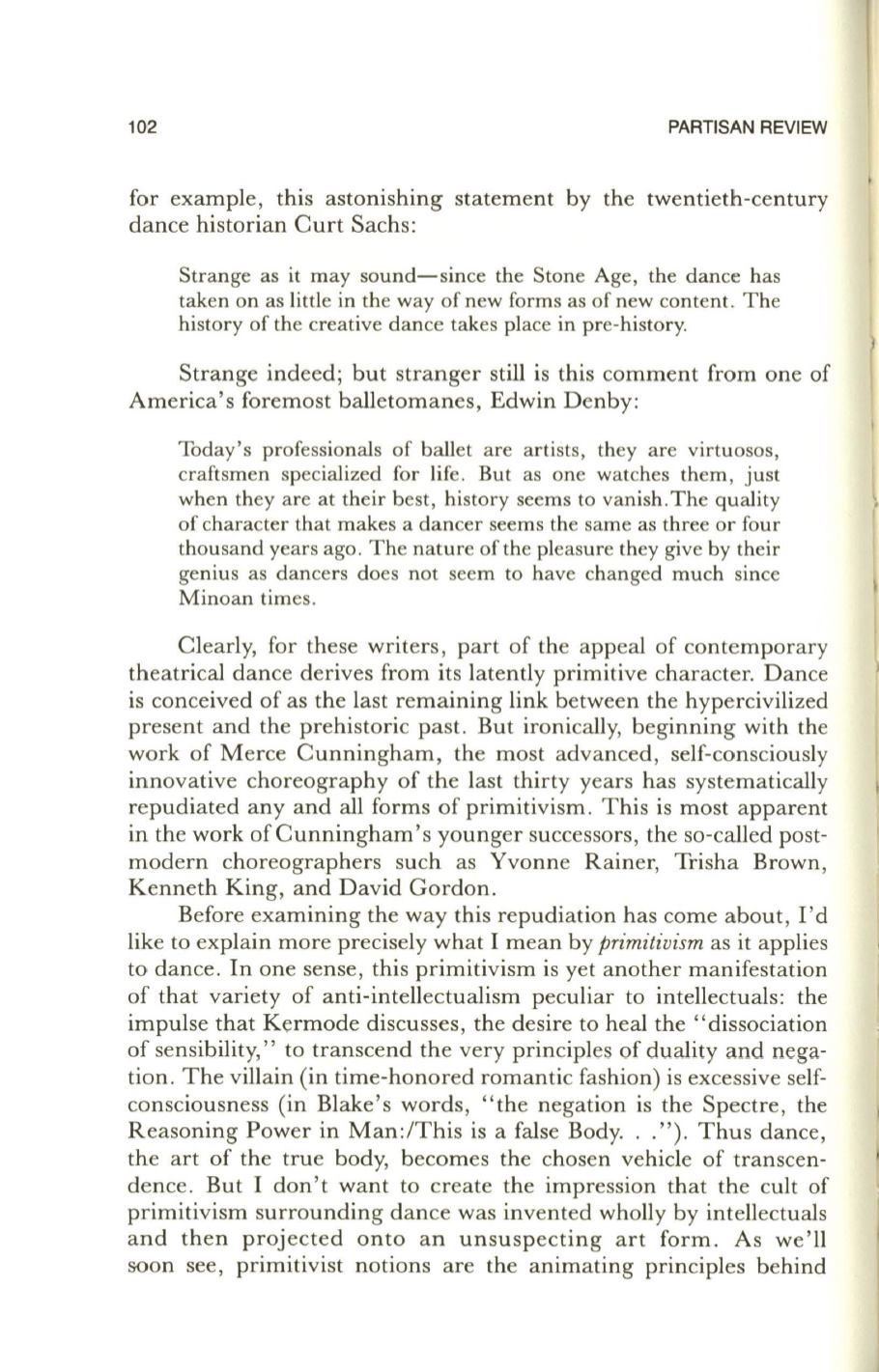
102
PARTISAN REVIEW
for example, this astonishing statement by the twentieth-century
dance historian Curt Sachs:
Strange as it may sound-since the Stone Age, the dance has
taken on as little in the way of new forms as of new content. The
history of the creative dance takes place in pre-history.
Strange indeed; but stranger still is this comment from one of
America's foremost balletomanes, Edwin Denby:
Today's professionals of ballet are artists, they are virtuosos,
craftsmen specialized for life . But as one watches them, just
when they are at their best, history seems to vanish. The quality
of character that makes a dancer seems the same as three or four
thousand years ago. The nature of the pleasure they give by their
genius as dancers does not seem to have changed much since
Minoan times.
Clearly, for these writers, part of the appeal of contemporary
theatrical dance derives from its latently primitive character. Dance
is conceived of as the last remaining link between the hypercivilized
present and the prehistoric past. But ironically, beginning with the
work of Merce Cunningham, the most advanced , self-consciously
innovative choreography of the last thirty years has systematically
repudiated any and all forms of primitivism. This is most apparent
in the work of Cunningham's younger successors, the so-called post–
modern choreographers such as Yvonne Rainer, Trisha Brown,
Kenneth King, and David Gordon .
Before examining the way this repudiation has come about, I'd
like to explain more precisely what I mean by
primitivism
as it applies
to dance. In one sense, this primitivism is yet another manifestation
of that variety of anti-intellectualism peculiar to intellectuals: the
impulse that Kermode discusses, the desire to heal the "dissociation
of sensibility," to transcend the very principles of duality and nega–
tion. The villain (in time-honored romantic fashion) is excessive self–
consciousness (in Blake's words, "the negation is the Spectre, the
Reasoning Power in Man:/This is a false Body. .. "). Thus dance,
the art of the true body, becomes the chosen vehicle of transcen–
dence. But I don't want to create the impression that the cult of
primitivism surrounding dance was invented wholly by intellectuals
and then projected onto an unsuspecting art form. As we'll
soon see, primitivist notions are the animating principles behind


